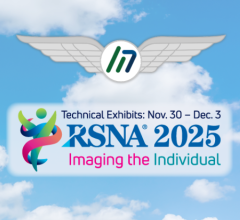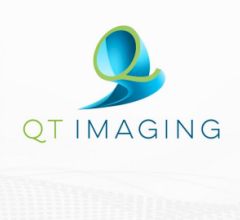
Greg Freiherr has reported on developments in radiology since 1983. He runs the consulting service, The Freiherr Group.
Will Enterprise Imaging Save Hippocratic Medicine?

Hippocrates Examining a Child, a painting by Robert Thom, 1950s. Illustration courtesy National Library of Medicine (no changes per creative commons)
Hippocrates viewed the patient as a whole. Today physicians tend to see the patient as a collection of parts — cardiologists hearts; orthopedists joints.
Generalists may refer their patients to specialists who may hand them off to subspecialists, leading many to lament about the practice of modern medicine in silos.
Enterprise imaging could change that. It is being groomed to break down the barriers that keep medical disciplines apart, presenting to all involved in healthcare a picture of the patient as a collective rather than individual parts.
This will happen only through a concerted effort, one that combines multiple technologies — enterprise viewers (see “The Impracticality of a Truly Universal Viewer for Enterprise Imaging”) and vendor neutral archives, workflow engines and advanced analytics. What might be achieved is a complete picture of the patient. Included will be digital stills and videos; smartphone pictures and PowerPoint charts; EKG graphs and radiology reports; speech pathology recordings and dictation.
Archive Magic
In the words of British science fiction writer Arthur C. Clark, any sufficiently evolved technology is indistinguishable from magic. Enterprise imaging is the most advanced form of picture archiving and communications, unlocking the value of the myriad of technologies that capture, archive and transmit digital medical images. In the coming era of medicine, with its emphasis on value rather than volume, it promises the sleight of hand that will bring the many disciplines of medicine together.
The vendor neutral archive (VNA) is critically important to realizing this potential. Adopted early as a way to avoid migrating data from one picture archiving and communication system (PACS) to the next, it was soon recognized as a central repository for multiple types of patient data. Today VNAs are welcoming DICOM and non-DICOM images into a common management structure that can be supported across the lifecycle of the data.
To be truly vendor neutral, archives must be hardware and vendor independent; based on standards; central to all clinical and business content relevant to the patient; and interoperable. To live up to expectations in enterprise imaging, they must be integrated with the electronic medical record (EMR). The importance of a seamless connection with the EMR system is hard to overstate.
The electronic medical record is the catalyst for the exchange of images among medical disciplines. Without it, no such exchange can occur.
In this, archives serve as a kind of “community hall,” where images and other patient data are stored for clinicians and diagnosticians to access in ways calculated to benefit the patient and make healthcare more efficient. Neither the malady nor the location of the patient should matter — be it a rash examined in dermatology, a gaping wound photographed in the ER, or a standard uptake value calculated using positron emission tomography/computed tomography (PET/CT) in the nuclear medicine department. The physician should have to care only about the clinical value of the patient data, not from where it came or how it was captured.
To be of greatest use, the archives should be scalable to support the smallest clinic, the multi-site enterprise, and everything in between. The driving concern of their makers should be to support their agnostic functions and to increase their operational speeds.
Better Living Through Technology
Fifty year olds in the U.S. in 2007 could expect to live six years longer on average than those in 1950, according to Human Mortality Database. We have reached this point in large part thanks to the plethora of imaging devices that allow physicians to look noninvasively inside the human body.
Technological advances have shown how the data captured with these machines and others can be gathered, stored and transmitted. This has created demand for the many healthcare practitioners — generalists and specialists alike –to see what has traditionally been available to only a few.
This is the grandest promise of enterprise imaging: that it will lead medicine back to its roots, where the patient is treated as a person rather than separable parts.
How ironic would it be if technology, which has fomented a revolution in healthcare while dissociating care into many parts, were to provide the means by which medical practitioners recommit to the Hippocratic ideal?
Editor's note: This is the second blog in a four-part series on enterprise imaging. The first blog, “The Impracticality of a Truly Universal Viewer for Enterprise Imaging,” can be found here.


 December 09, 2025
December 09, 2025 









